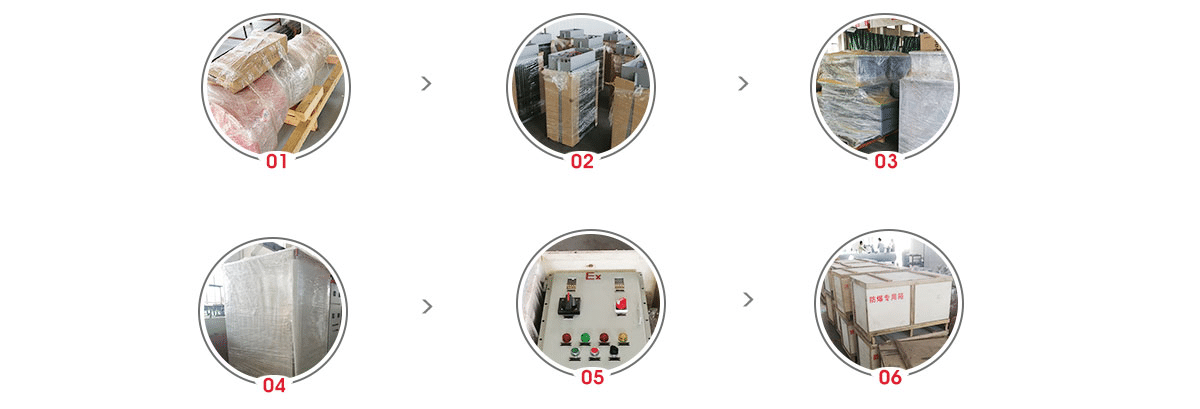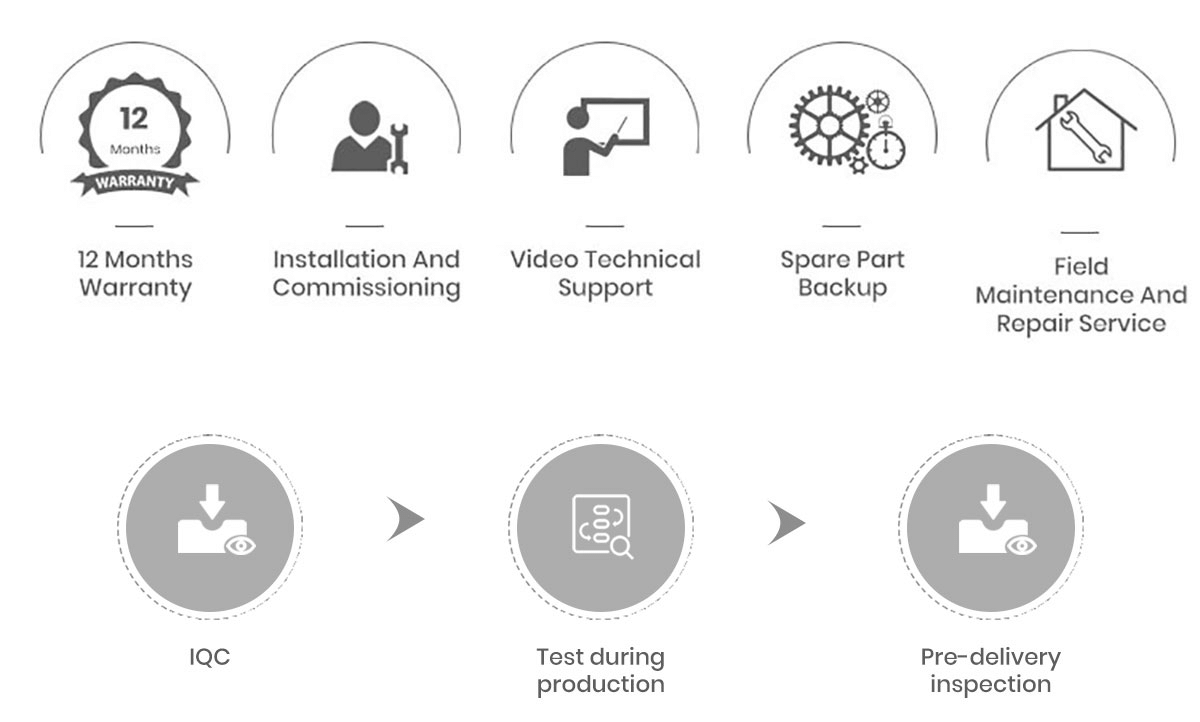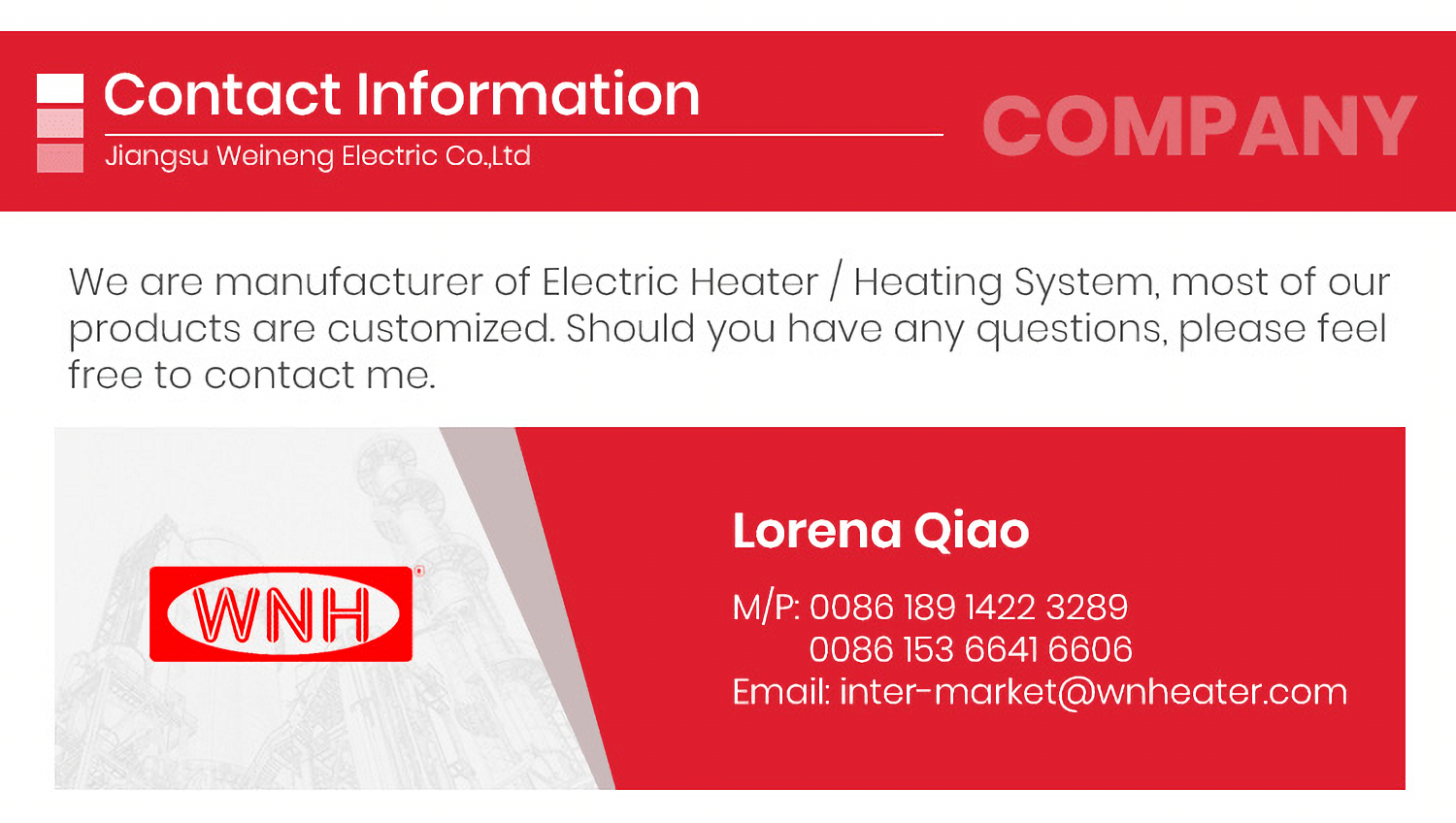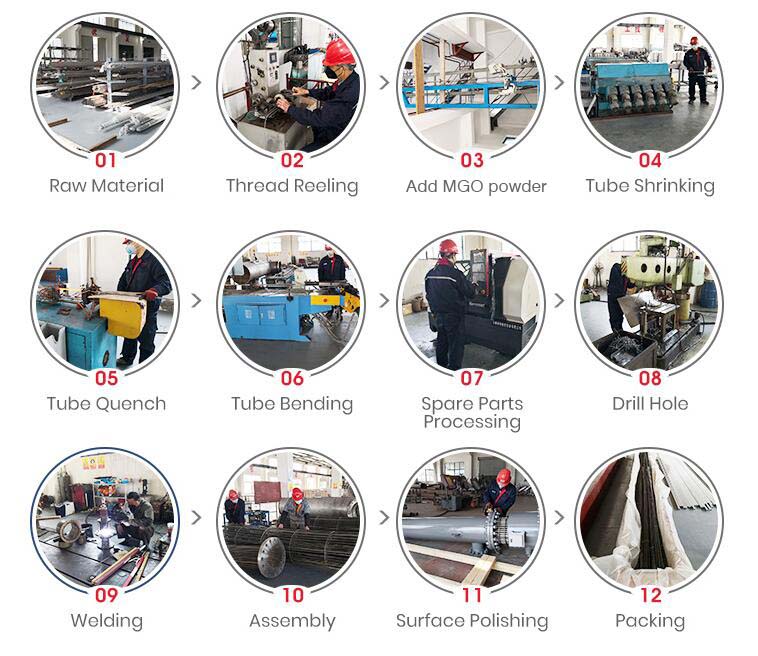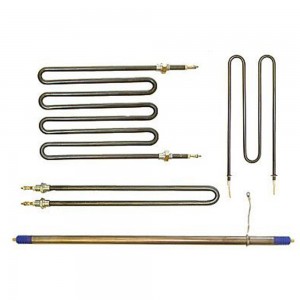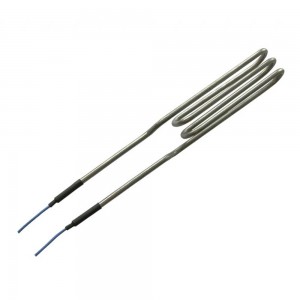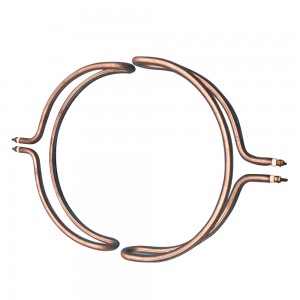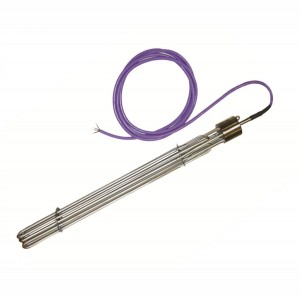Finned tubular heater
High quality raw materials:
Ni80Cr20 resistance wire.
UCM high purity MgO powder for high temperature application.
Tube materials available in: INCOLOY800/840, INCONEL600, Hastelloy, 304, 321, 310S, 316L and etc.
Key technical properties:
Leakage current : less than 0.5mA under operating temperature.
Insulation resistance: cold state ≥500MΩ; hot state≥50MΩ.
Dielectric strength: Hi-pot>AC 2000V/1min.
Power Tolerance : +/-5%.
We have certifications such as:ATEX, IEC Ex, CE, CNEX, ISO14001, OHSAS18001,SIRA, DCI.
Natural gas, seal gas, fuel gas heating
Heating of process gases and industrial gases)
Air heating (pressurized air, burner air, drying technology)
1.Are you factory?
Yes, we are factory, all customers are more than welcome to visit our factory .
2.What are the available product certifications?
We have certifications such as: ATEX, CE, CNEX. IS014001, OHSAS18001,SIRA, DCI. Etc
3.How Do Tubular Heating Elements Work?
Tubular heating elements transfer heat through direct exposure to a liquid, solid, or gas. They are configured to a specific watt density, size, shapes, and sheath based on their specific application. They can reach temperatures of 750 degrees centigrade or higher when configured properly.
4.What Mediums Can Tubular Heating Elements Be Used For?
Tubular heating elements can be used for heating a variety of mediums including liquids, gases, and solids. Tubular heating elements in conduction heaters use direct contact for heating solids. In convection heating, elements transfer heat between a surface and a gas or liquid.
5.How long is the warranty time for your product?
Our officially promised warranty time is 1 year after delivering at best.

